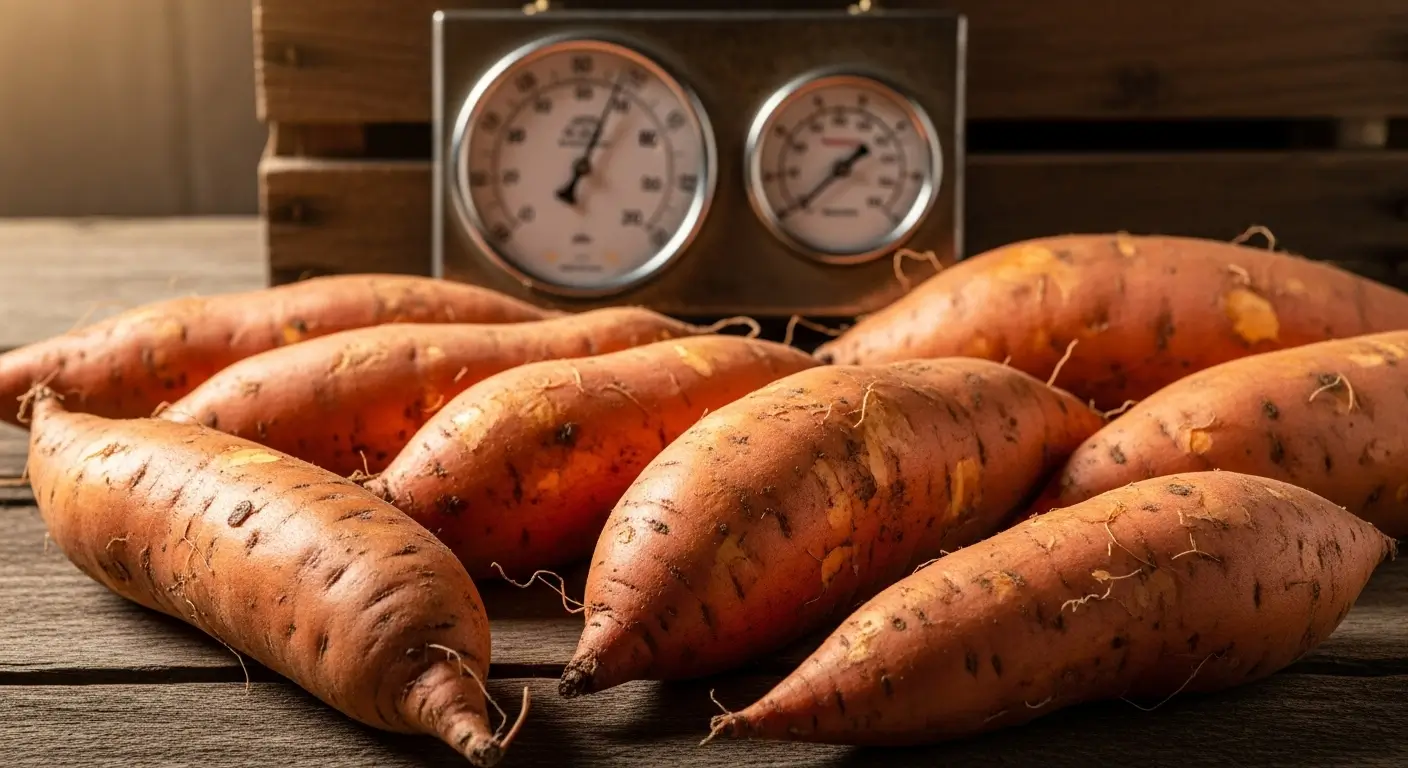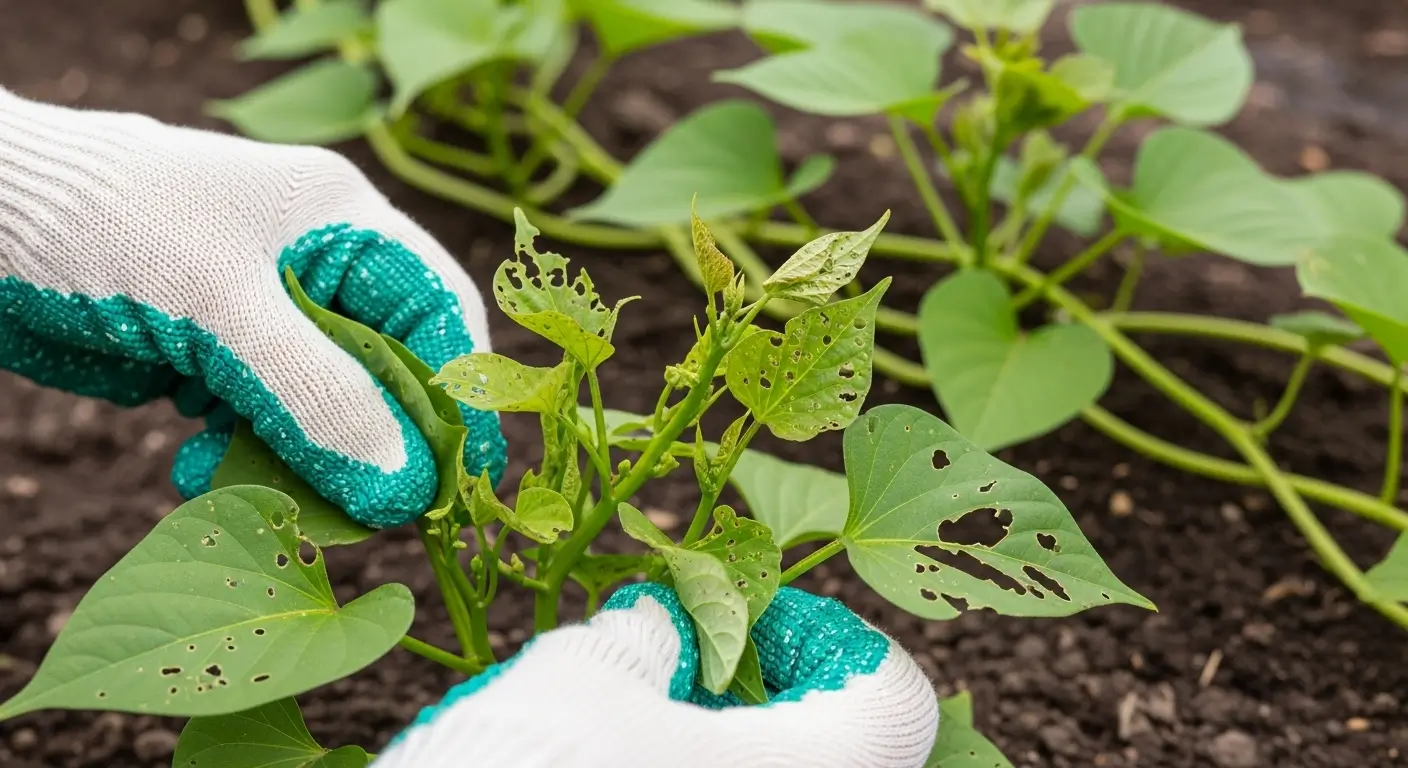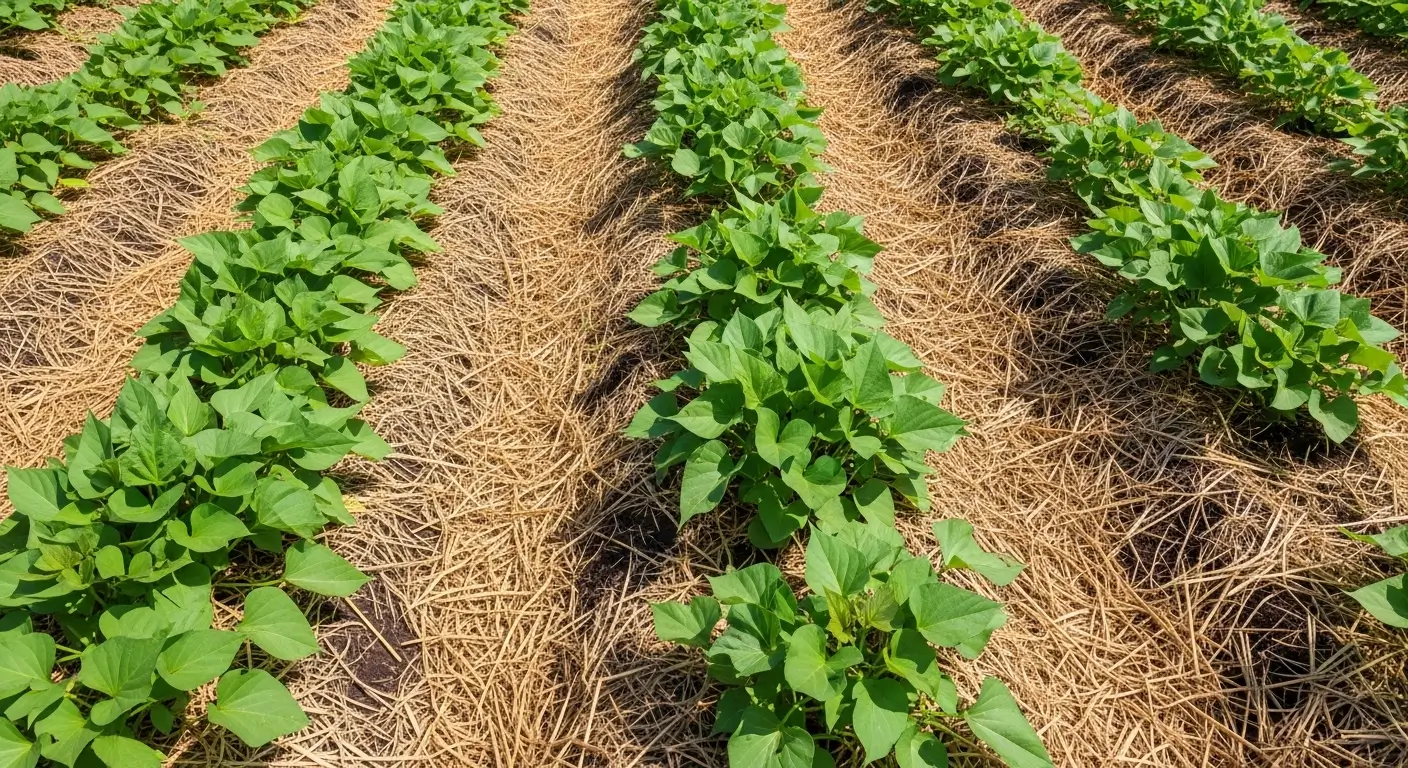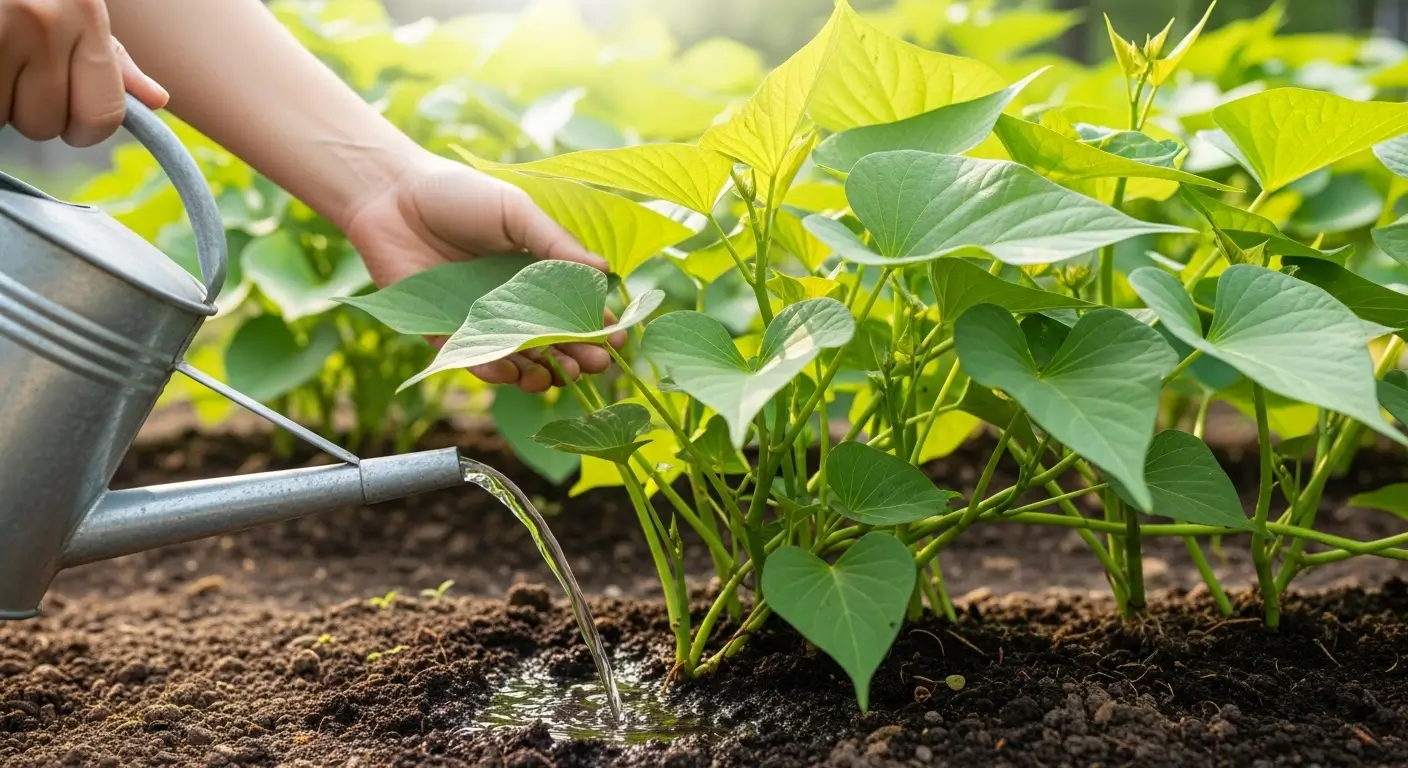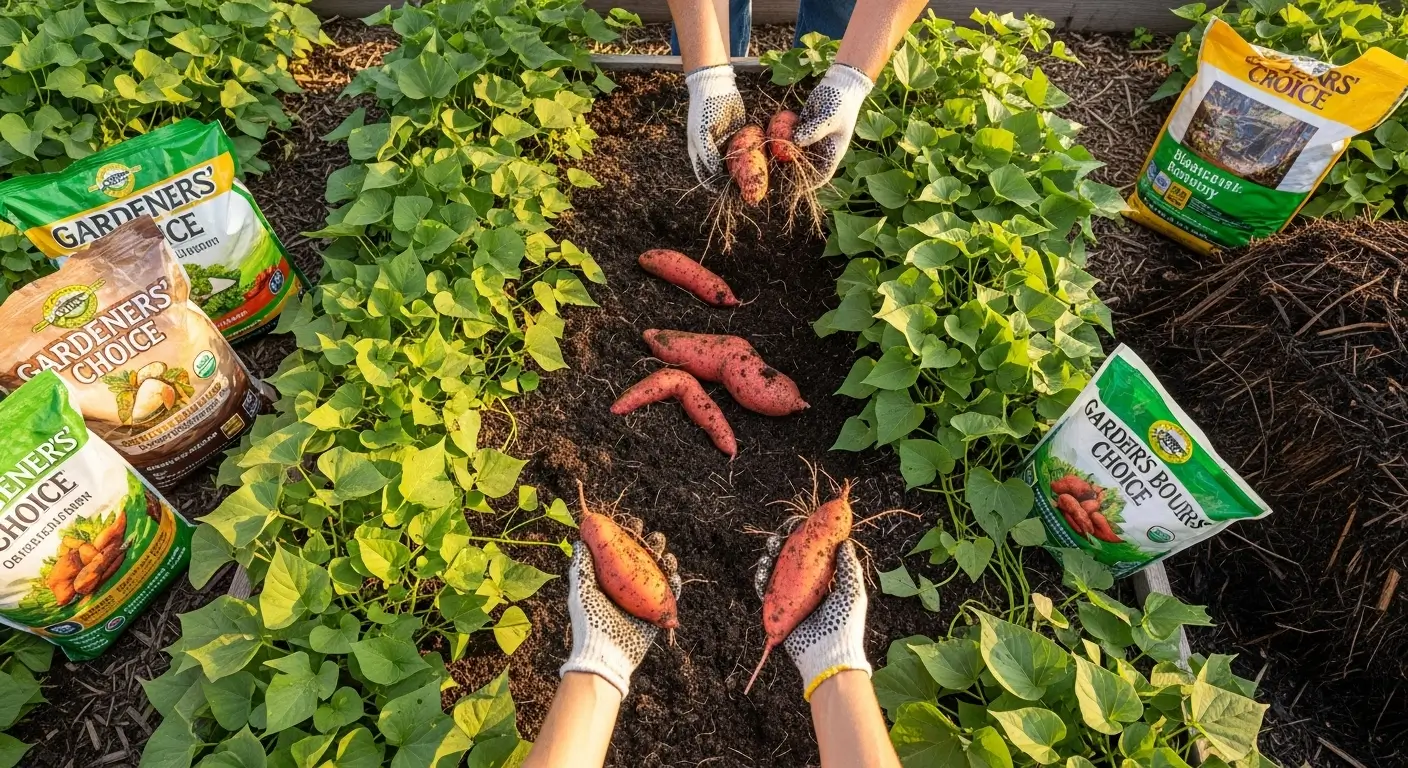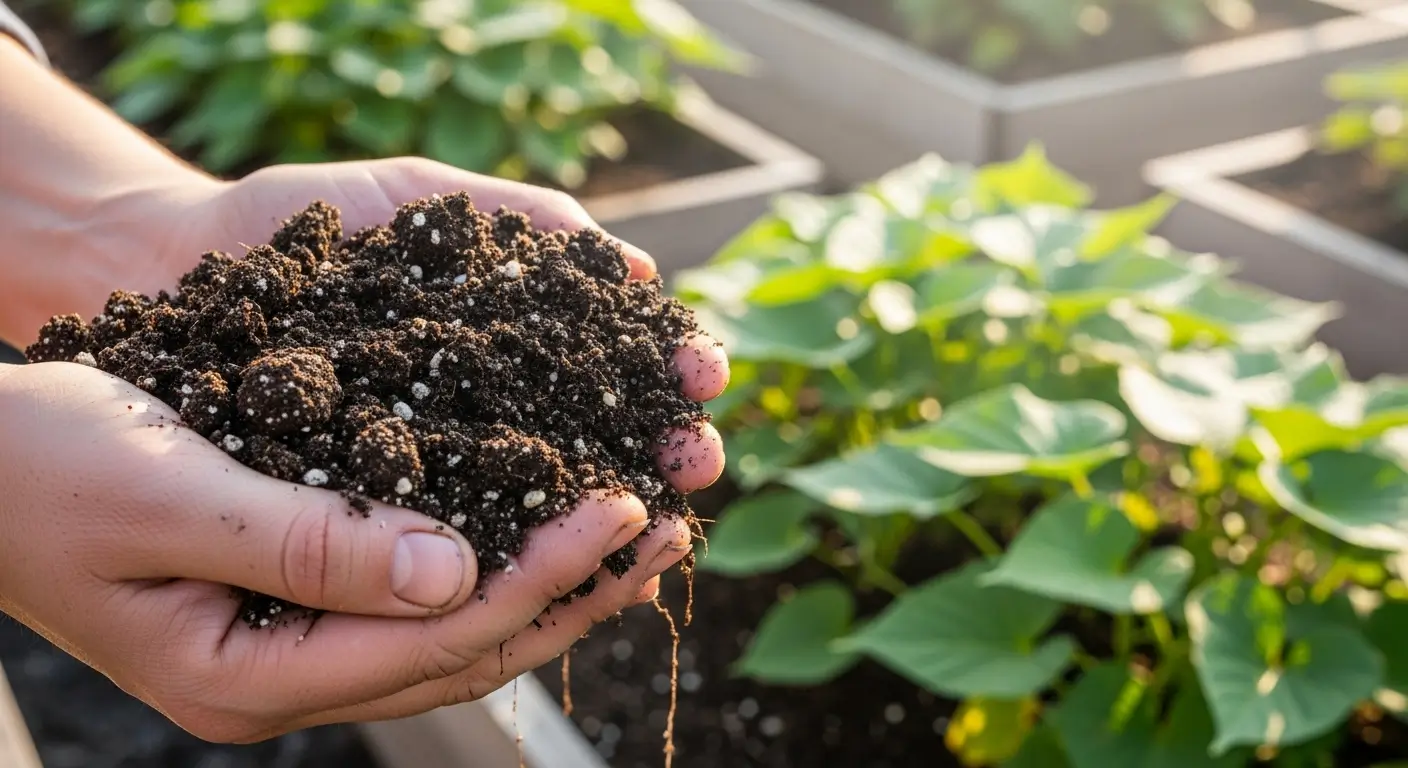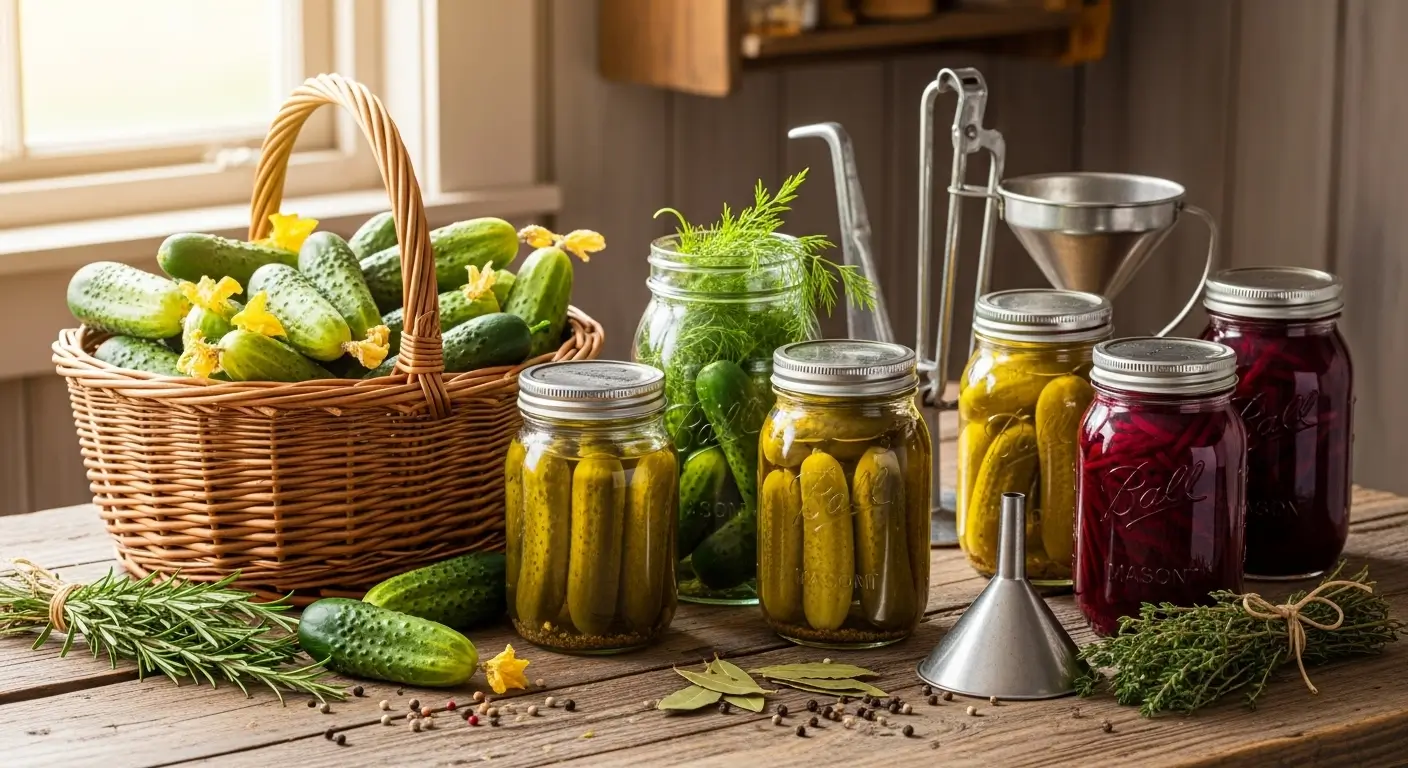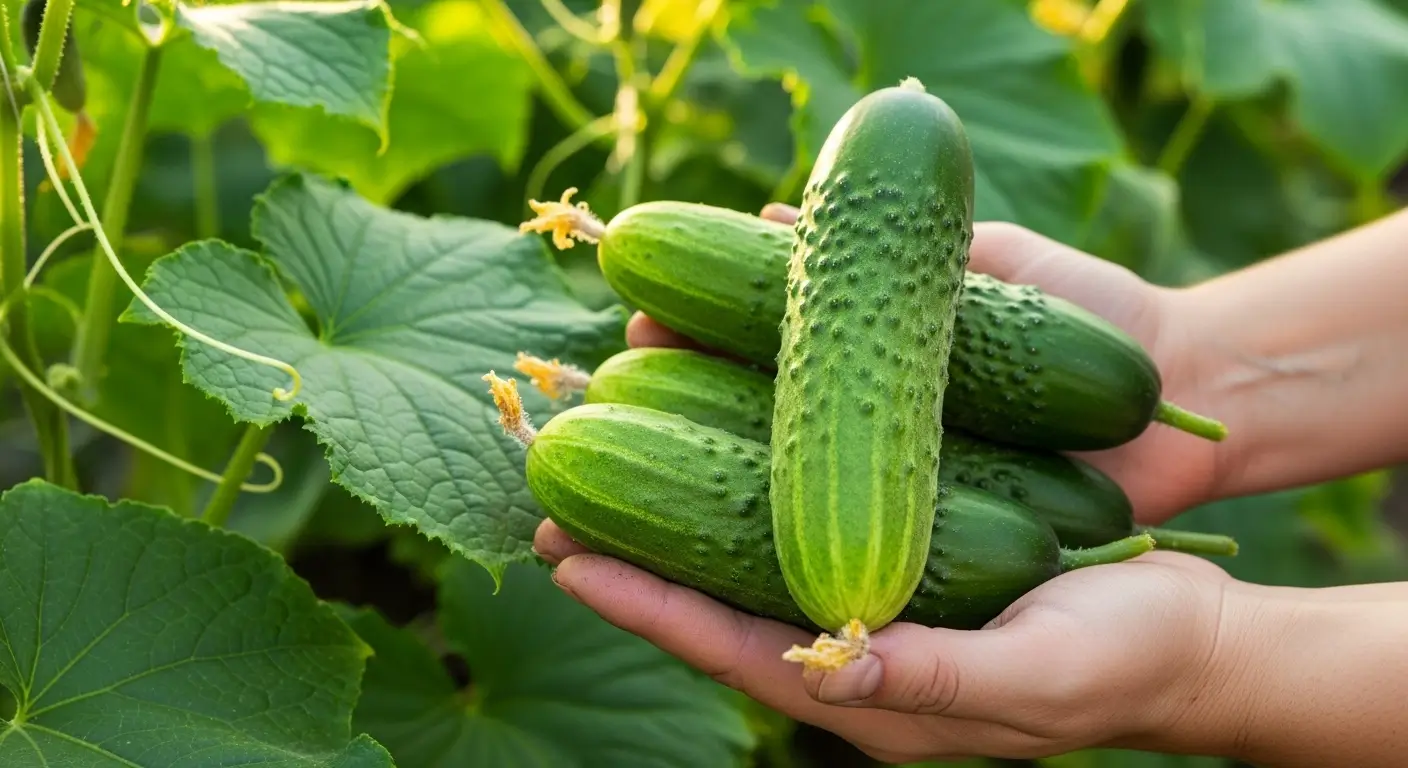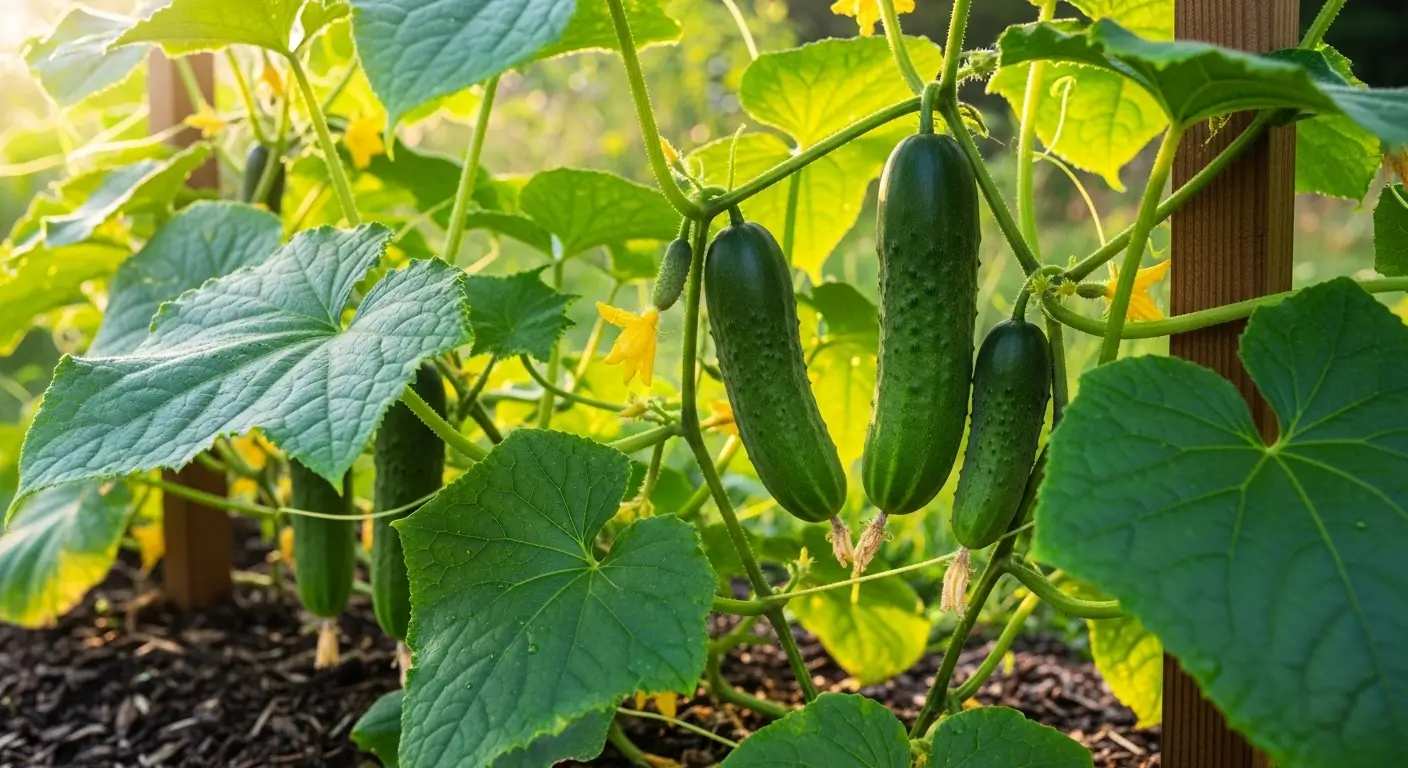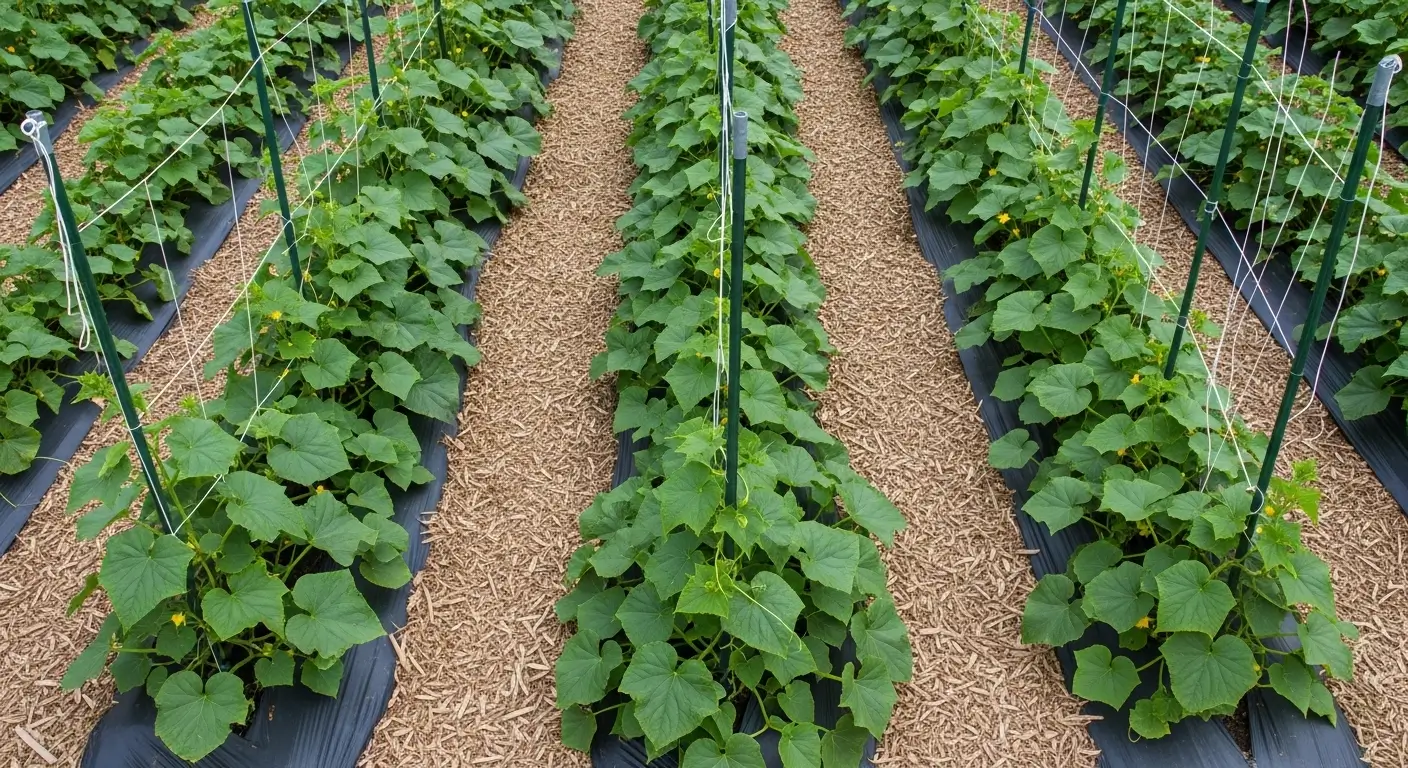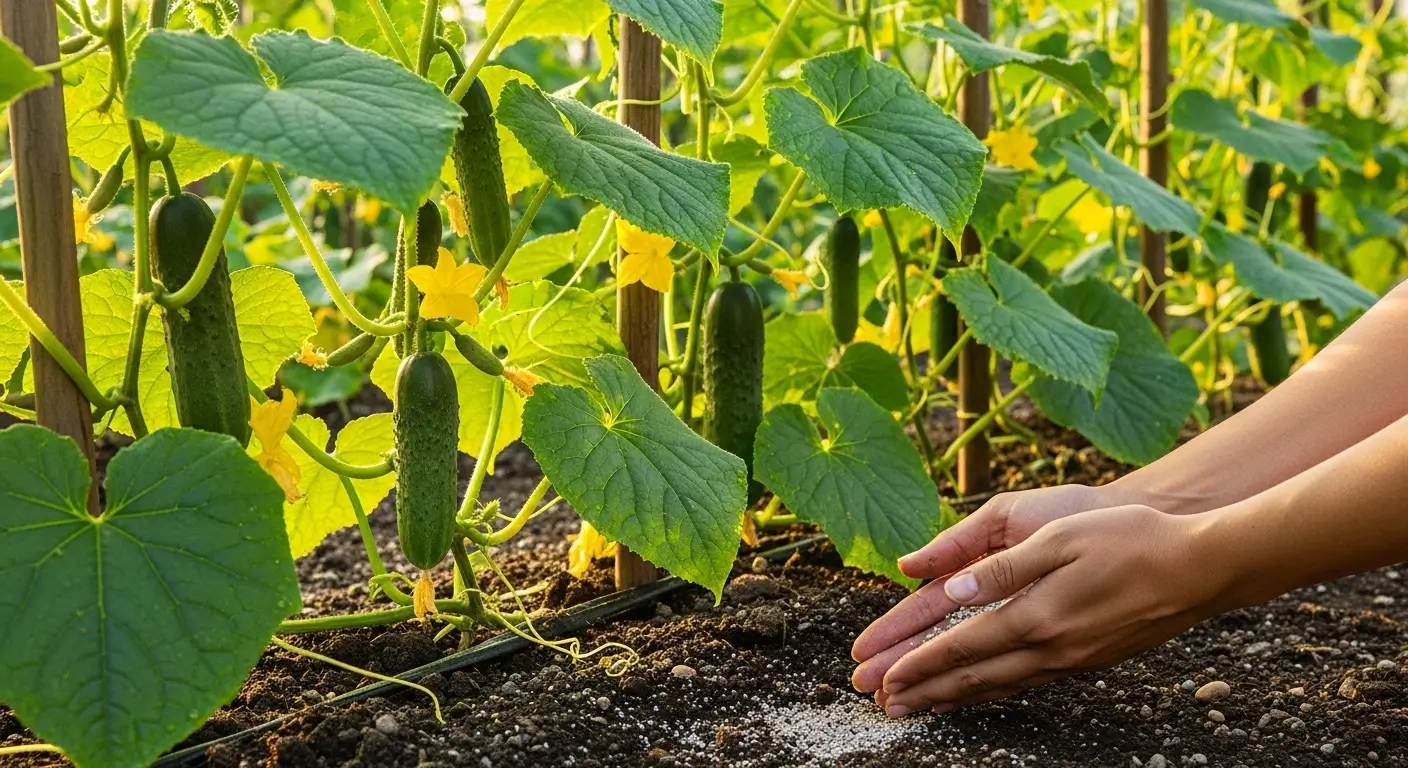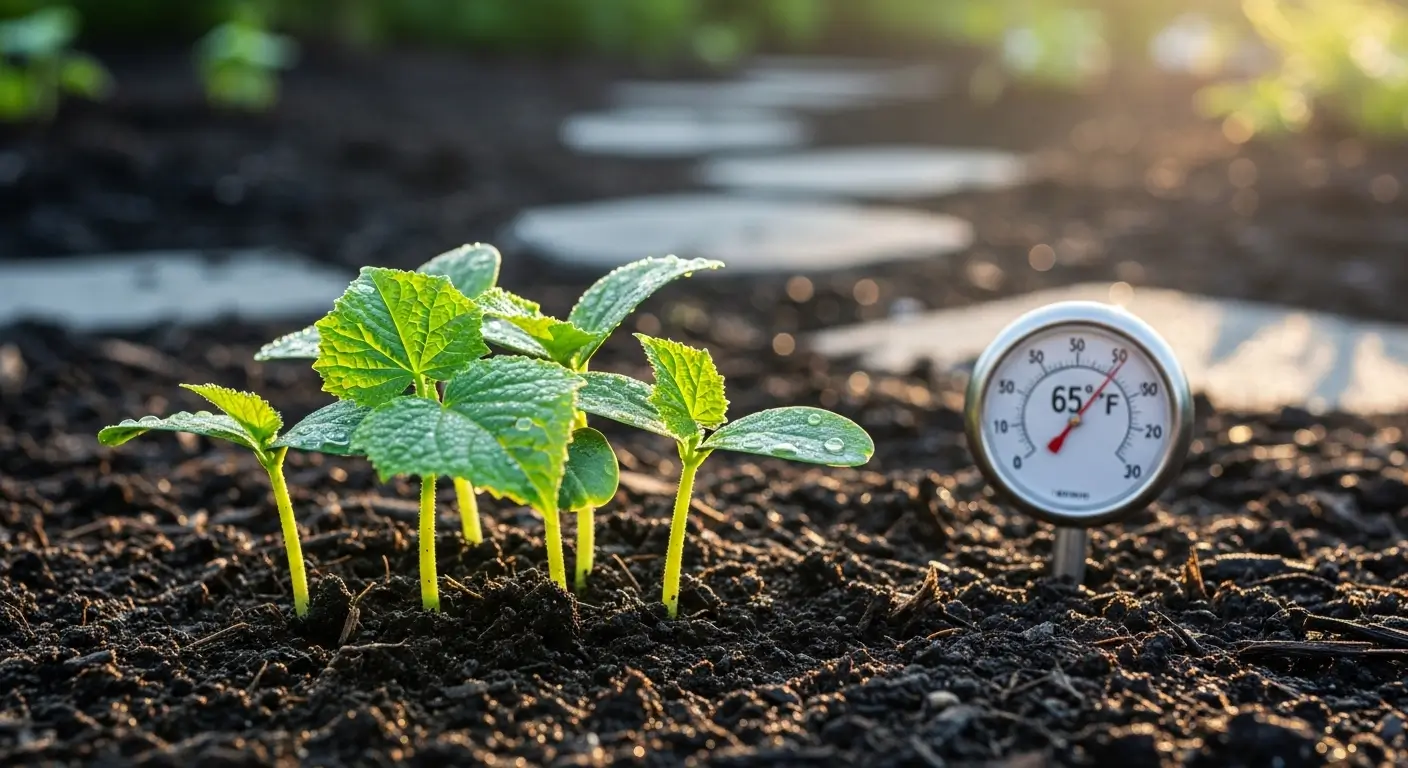Okay, so picture this: I’m practically doing a happy dance in my garden last fall because I’d just harvested the most gorgeous sweet potatoes you’ve ever seen. We’re talking Instagram-worthy, show-off-to-the-neighbors beautiful. I was so pumped that I basically threw them into some boxes and stuck ’em in my basement, patting myself on the back for being such a wise gardener.
Fast forward three weeks, and I’m opening those boxes to find… well, let’s say it wasn’t pretty. Half my precious harvest had turned into mushy, sprouted disasters that belonged in the compost bin, not on my dinner table. Ugh, the heartbreak!
That epic fail taught me everything I know about storing sweet potatoes long term, and honestly? I’m glad it happened because now I’m a sweet potato storage ninja. Today I’m gonna share all my hard-won secrets so you don’t have to learn the expensive way like I did.
Here’s what we’re diving into so you can become a sweet potato storage rockstar:
- Why you absolutely can’t skip the curing step (seriously, don’t even think about it)
- The sweet spot for sweet potato storage temperature and humidity
- Different ways to store them depending on your home setup
- How to avoid the most common mistakes that’ll ruin your harvest
- The real deal on how long sweet potatoes actually last
- Red flags that mean it’s time to start cooking like crazy
Table of Contents
Why Sweet Potatoes Need Special Storage Treatment
Here’s what trips up pretty much everyone (including past me): sweet potatoes are NOT regular potatoes. I mean, right? But we tend to treat them the same way, and that’s where everything goes sideways.
Regular potatoes are like, “Hey, just toss us somewhere cold and dark, we’re good!” But sweet potatoes? They’re more like tropical princesses who have particular demands. They actually HATE the cold, which blew my mind when I first learned this.
Think about it – sweet potatoes come from warm climates, so of course they don’t want to hang out in your freezing basement like I tried to make them do. They need this whole two-step process: first, you cure them (which sounds fancy but isn’t that hard), then you store them just right.
Curing is super crucial because fresh sweet potatoes have these fragile, delicate skins that are easily damaged. Plus, they’re packed with moisture, and their starches haven’t converted to sugars yet. The curing process basically toughens up their skins into protective armor and makes them taste way better, too. It’s like giving them a spa treatment before they settle in for their winter nap.
The Critical First Step: Proper Curing
Alright, let’s talk about curing because this is where I totally messed up the first time. I could skip this step because, honestly, it sounded like extra work I didn’t need. Boy, was I wrong!
Curing isn’t optional – it’s absolutely essential if you want your sweet potatoes to last more than a few weeks. Here’s exactly what you gotta do:
Temperature: Keep ’em at 80-85°F consistently (yeah, it’s warm!) Humidity: Super humid – like 85-95% Time: Give them 7-10 days to do their thing. Air flow: They need some gentle air movement, but don’t blast them with a fan
I cure mine in my basement now using a little space heater and a bunch of shallow pans filled with water scattered around to bump up the humidity. One year, I used my guest bathroom with a portable heater – anywhere you can control the temperature and keep it muggy works great.
The whole point is letting those sweet potatoes heal any little cuts from harvest and develop thick, protective skins. You’ll actually see the difference – they go from having tender, easily-damaged skins to tough, leathery ones that can handle months of storage.
For the complete step-by-step on how to do this right, check out my detailed guide on properly curing sweet potatoes. Trust me, getting this part right makes everything else so much easier.
Understanding Sweet Potato Storage Temperature Requirements
Okay, here’s where I really screwed up that first year. I figured colder was better (like with most vegetables), so I stuck those poor sweet potatoes in the coldest part of my basement. Big mistake!
The magic number for sweet potato storage temperature is 55-60°F. Not cold! Not hot! Right in that sweet spot that’s probably warmer than you think.
Here’s what happens when you get it wrong: Too cold (under 50°F): They get what’s called “chilling injury” – sounds dramatic, but it basically means they develop hard, woody centers and taste awful Too warm (over 65°F): They start thinking it’s spring and begin sprouting like crazy Temperature swings: Even worse than being consistently wrong – sweet potatoes hate when temperatures bounce around.
My basement that first year was all over the place – sometimes 45°F, sometimes 65°F – and let me tell you, those sweet potatoes were NOT happy. The ones in the coldest spots got those nasty hard cores that made them basically inedible. In contrast, the ones in warmer areas looked like they were trying to grow into plants again.
Now I’m obsessed with monitoring my storage temperature. One of those min/max thermometers tells me exactly what’s happening, and I check it way more than I need to. If you don’t have a naturally cool spot that stays steady, here are some options that work:
- An unheated bedroom (if you’ve got one)
- A closet that doesn’t get too warm
- A garage that doesn’t freeze
- Even under the stairs can work if temperatures stay stable
Humidity and Air Circulation: The Supporting Cast
Temperature gets all the glory, but humidity and airflow are just as crucial for keeping your sweet potatoes happy. You want it pretty humid – around 75-85% – but not so muggy that everything starts rotting.
This is another area where I learned some hard lessons. Those sealed boxes I used the first time? Total disaster. No air movement meant any little bit of rot spread like wildfire from one sweet potato to all its neighbors.
Now my setup includes:
- Storage containers that actually breathe (no more sealed death traps!)
- A shallow pan of water if things feel too dry
- A tiny fan on the lowest setting for gentle air movement
- Regular check-ins to make sure everything’s balanced
The key is creating an environment that’s humid enough to keep the sweet potatoes from drying out but not so humid that you’re basically creating a rot factory. It’s a balancing act, but it’s not too complicated once you get the hang of it.
Storage Container Options That Actually Work
Let me save you some trial and error by sharing what I’ve tested over the years – the good, the bad, and the “never again”:
Wooden Crates or Bushel Baskets ⭐⭐⭐⭐⭐
These are my absolute favorites, especially if you’ve got a decent-sized harvest. Excellent airflow, easy to peek in and check on things, and the sweet potatoes don’t touch each other (which prevents the dreaded rot spread). I line mine with newspaper to keep everything from rolling around.
Mesh Produce Bags ⭐⭐⭐⭐
Perfect for smaller amounts. I can hang these in my storage area for excellent air circulation, and it’s super easy to see what’s going on without disturbing everything. Just don’t stuff them too full, or you’ll defeat the purpose.
Perforated Plastic Storage Boxes ⭐⭐⭐
These can work okay if you drill plenty of holes for ventilation. They’re handy for stacking, but I prefer the wooden options for long-term storage.
What NOT to Use (Learn from My Mistakes):
- Sealed plastic bags – seriously, don’t do this to your poor sweet potatoes!
- Any solid container without holes
- Anything that mushes them all together
- Your refrigerator (I know someone who tried this – spoiler alert: it didn’t end well)
Best Methods for Storing Sweet Potatoes Long Term in Different Situations
Not everyone’s got a perfect root cellar (I wish!), so let me break down what actually works in real-world situations:
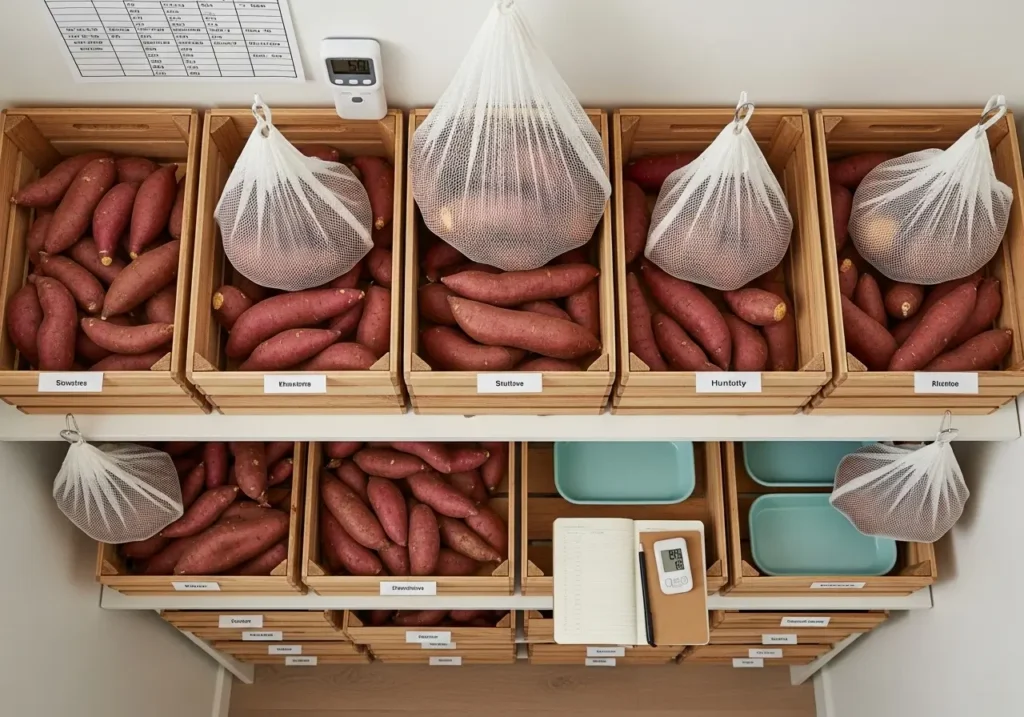
Root Cellar Sweet Potato Storage (The Dream Setup)
Suppose you’re lucky enough to have a real root cellar or can create something similar. In that case, you won the sweet potato storage lottery. The natural temperature regulation and humidity make it perfect for storing sweet potatoes in the long term.
What to do:
- Set up wooden shelves or use crates
- Keep sweet potatoes away from other veggies that like different conditions
- Do monthly check-ins
- Expect your sweet potatoes to last 6-10 months (seriously!)
Basement Storage (Most of Us Reality)
Most of us deal with basements, and they can work with a few tweaks. I’ve turned a corner of mine into sweet potato paradise:
- Small heater to keep temps steady at 55-60°F
- Humidifier for those dry winter months
- A little fan for air circulation
- Digital thermometer and humidity gauge (because I’m a bit obsessive now)
Closet or Spare Room Storage
Got an unheated bedroom or big closet? These can work great! I know tons of gardeners who’ve had success this way:
- Pick the coolest room in your house
- Keep an eye on temperatures as seasons change
- Use containers to manage humidity
- Be ready to move things if needed
Garage Storage (Proceed with Caution)
It might work if your garage doesn’t freeze, but this is definitely the trickiest option. Garage temperatures can be everywhere, so you’ll need to babysit this setup more than others. Insulated garages work way better than uninsulated ones.
How Long Do Sweet Potatoes Last in Storage?
This is the million-dollar question, and honestly? It depends on a bunch of factors. Here’s what I’ve learned from tracking my own harvests:

Perfect conditions (proper curing + ideal storage):
- 6-8 months for most types
- Up to 10 months for the excellent keepers like Centennial. UMass Extension confirms sweet potatoes can maintain excellent quality for up to a year in proper storage conditions.
Pretty good conditions (minor temp fluctuations but otherwise solid):
- 4-6 months with some ups and downs in temperature
- 3-4 months if the humidity’s a bit off, but the temps are good
Poor conditions (my early disaster years):
- 2-6 weeks before things go south fast
- Once problems start, they spread like crazy
The thing is, it’s not just about how long they last – it’s about keeping them in good shape the whole time. I’ve eaten sweet potatoes that were 8 months old and still delicious, while others went bad in a few weeks because I didn’t store them properly.
Preventing Sweet Potato Spoilage: Warning Signs and Solutions
Learning to spot trouble early has saved me so many sweet potatoes. Here’s what to watch for when you do your regular storage check-ins:
Red Flags to Look For:
- Soft spots: Usually, the first sign that something’s wrong
- Dark patches: Especially at the ends or where the skin has been damaged
- Sprouting: Means it’s too warm in there
- Getting wrinkly: Usually means it’s too dry
- Funky sweet smell: That’s fermentation, and not the good kind
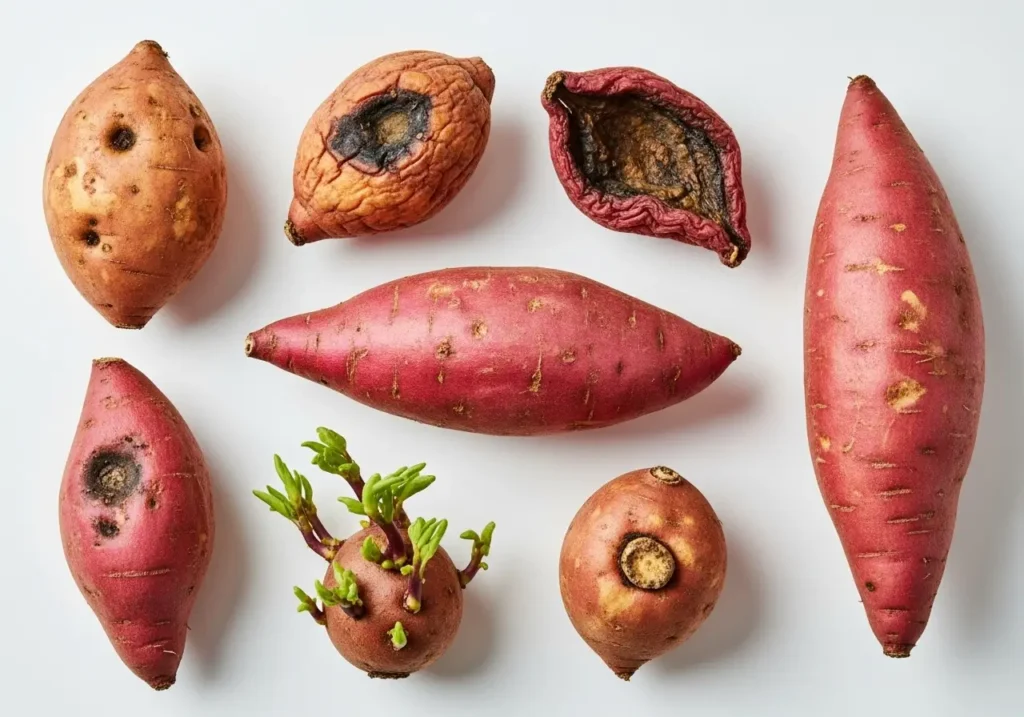
My Monthly Storage Routine (Yeah, I’m That Person Now):
- Quick look-see: Scan for obvious problems
- Gentle touch test: Feel for soft spots without being rough
- Toss the troublemakers: Use any questionable ones right away, or compost them
- Check conditions: Temperature, humidity, airflow – the whole works
- Shuffle if needed: Sometimes you gotta move things around for better air circulation
The biggest lesson I learned? Deal with problems immediately. One rotting sweet potato can turn your whole storage situation into a disaster, especially in humid conditions. I’ve seen it happen, and it’s not pretty.
Maximizing Your Storage Success
After years of tweaking and testing, here are my top tips for sweet potato storage success:
Only store the good ones: I used to try saving slightly damaged sweet potatoes “just in case” – never works. Only store perfect specimens.
Timing matters: Don’t wait too long after your vines die back to harvest. Need help with timing? Check out my guide on when to harvest sweet potatoes.
Layer with newspaper: I put newspaper between layers to prevent them from touching and to soak up any excess moisture.
Consistency is key: A small, steady storage environment beats a big, variable one every time.
Use the ugly ones first: Save your prettiest sweet potatoes for long-term storage and use any with tiny flaws first.
Troubleshooting Common Storage Problems
Even when you think you’ve got everything figured out, stuff happens. Here’s how I handle the most common issues:
Problem: Hard, woody centers developing
What’s happening: It is too cold in the storage. Fix it: Move to a warmer spot (55-60°F), and use the affected ones quickly in soups or stews.
Problem: Everything’s sprouting like crazy
What’s happening: Too warm or they’re getting light. Fix it: Cool things down and make sure it’s completely dark
Problem: Sweet potatoes are getting all shriveled
What’s happening: Not humid enough. Fix it: Add some water pans and check your container ventilation.
Problem: Soft rot spreading fast
What’s happening: Poor airflow and/or damaged tubers contaminate others. Fix it: Improve air circulation and remove ALL affected sweet potatoes immediately.
Quick Problem Solver: What’s Going Wrong?
Okay, so maybe you’re reading this because your sweet potatoes aren’t behaving like they should, or maybe you just want to make sure you’re doing everything right. Either way, I’ve got you covered!
I’ve put together this little troubleshooter based on all the questions I get from fellow gardeners about storing sweet potatoes long term. Just answer a few quick questions about what you’re seeing (or want to prevent), and you’ll get personalized advice based on your exact situation.
Trust me, I’ve seen pretty much every storage disaster you can imagine, so there’s definitely a solution for whatever’s happening with your sweet potatoes!
🍠 Sweet Potato Storage Problem Solver
Get personalized solutions for storing sweet potatoes long term
What’s happening with your stored sweet potatoes?
How are you currently storing them?
Did you cure your sweet potatoes after harvest?
Your Sweet Potato Storage Success Plan
Look, storing sweet potatoes long-term isn’t brain surgery, but it takes some attention to detail. The good news? Once you get your system dialed in, you’ll be enjoying your homegrown sweet potatoes well into spring!
The whole process starts back in the garden with proper growing and harvesting. If you haven’t already, definitely read my complete guide to growing sweet potatoes – it’ll set you up for storage success right from the start.
I’d love to hear about your sweet potato storage adventures! What’s worked for you? What disasters have you survived? Drop a comment below and share your story. Whether you’re figuring out apartment storage or perfecting a root cellar setup, we can all learn from each other’s experiences (and mistakes!). After all, that’s what makes gardening so much fun, right?
Sweet Potato Long Term Storage Frequently Asked Questions
How long do sweet potatoes last in storage?
Under ideal conditions with proper curing and storage at 55-60°F, sweet potatoes can last 6-8 months. Excellent keeping varieties like Centennial can last up to 10 months when stored properly.
What temperature is best for storing sweet potatoes long term?
The ideal sweet potato storage temperature is 55-60°F with 75-85% humidity. Temperatures below 50°F cause chilling injury, while temperatures above 65°F promote sprouting.
Do I need to cure sweet potatoes before storing them long term?
Yes, curing is essential for storing sweet potatoes long term. Cure them at 80-85°F with 85-95% humidity for 7-10 days to develop protective skins and heal harvest wounds.
What containers work best for storing sweet potatoes long term?
Use wooden crates, mesh bags, or perforated containers that allow air circulation. Never use sealed plastic bags as they trap moisture and cause rot. Sweet potatoes need ventilation to prevent spoilage.

